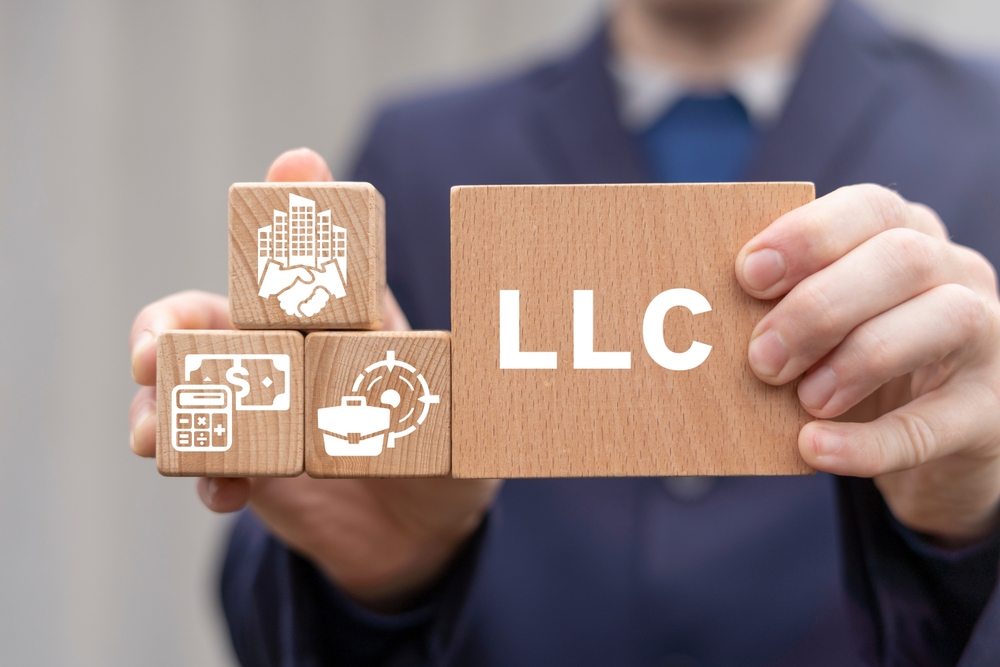Starting a business doesn’t always require a fortune. With the rise of digital platforms, automation tools, and flexible business models, low-investment businesses in the U.S. are thriving in 2025. Many Americans are looking for opportunities that offer independence, creativity, and financial stability without the burden of huge startup costs.
This article explores 15 low-investment business ideas tailored for Americans in 2025, supported by practical insights, actionable steps, and relevant research. Whether you’re aiming to escape the 9-to-5 grind, supplement your income, or create a scalable venture, you’ll find inspiration here.
Why Low-Investment Businesses Are Trending in 2025
- Economic shifts – Rising living costs and inflation have encouraged Americans to look for businesses that don’t demand huge upfront capital.
- Technology democratization – Tools like AI, cloud platforms, and digital marketplaces make it easier than ever to launch with minimal resources.
- Changing work culture – The gig economy and hybrid work culture allow people to start side hustles while maintaining flexibility.
- Consumer demand for personalization – Niche, small-scale businesses often succeed because consumers want tailored services and products.
🔎 Research Insight: According to the Kauffman Foundation for Entrepreneurship, nearly 60% of new U.S. businesses in the last three years were started with less than $10,000 in capital. The rise of digital-first enterprises explains why Americans are leaning toward lean startups.
15 Low-Investment Business Ideas for Americans in 2025
Below is a comprehensive list of ideas across industries, including digital, service-based, and product-based opportunities.
1. Freelance Digital Marketing Services
- Investment Needed: $500–$2,000 (laptop, software subscriptions, website).
- Why It Works in 2025: Small businesses in the U.S. increasingly rely on social media, SEO, and paid ads but don’t always have in-house teams.
- Actionable Steps:
- Specialize in one niche (real estate, fitness, e-commerce).
- Offer packages (e.g., social media management, SEO optimization, ad campaigns).
- Use AI-driven tools for efficiency.
2. Dropshipping Business
- Investment Needed: $200–$1,500.
- Model: Sell products online without holding inventory; suppliers ship directly to customers.
- Platforms: Shopify, WooCommerce, Etsy.
- Why Popular: Minimal overhead, scalable, and flexible.
- Pro Tip: Focus on U.S.-based suppliers for faster shipping times to beat competition.
3. Print-on-Demand (POD) Products
- Investment Needed: $100–$500.
- Products: T-shirts, mugs, tote bags, wall art with custom designs.
- Best Platforms: Printful, Redbubble, Teespring.
- Growth Factor: Niche designs (patriotic themes, hobbies, pet lovers) attract loyal communities.
4. Virtual Assistant (VA) Services
- Investment Needed: $500–$1,000 (website, productivity tools).
- Why Growing: Many U.S. entrepreneurs outsource admin tasks like email management, scheduling, and customer support.
- Specialization Opportunities: Real estate VAs, e-commerce store support, executive VAs.
5. Content Creation (YouTube, TikTok, Podcasting)
- Investment Needed: $300–$1,500 (camera, mic, editing software).
- Potential Earnings: Ad revenue, sponsorships, affiliate marketing, digital products.
- Why 2025 is a Great Time: Short-form video dominates social platforms; Americans spend an average of 2.5 hours daily consuming social content.
- Research Insight: A 2024 Pew Research study found that 41% of U.S. adults regularly watch independent creators for news and entertainment.
6. Online Tutoring & Coaching
- Investment Needed: $100–$1,000.
- Subjects: Test prep (SAT/ACT/GMAT), coding, languages, or professional skills.
- Why It Works: Parents and professionals invest heavily in education. Remote learning remains strong post-pandemic.
- Platforms: Zoom, Teachable, Thinkific.
7. Niche Subscription Boxes
- Investment Needed: $500–$3,000.
- Examples: Pet snacks, wellness kits, eco-friendly products, hobby-based (like board games or knitting).
- Why 2025 Ready: Consumers crave curated, personalized experiences.
- Pro Tip: Start with small batch shipments to test demand before scaling.
8. Home-Based Baking or Catering
- Investment Needed: $1,000–$5,000 (licenses, ingredients, packaging).
- Business Angle: Specialty cakes, gluten-free snacks, or culturally-inspired meals.
- Why It Works: The U.S. food market continues to grow with demand for artisanal and healthy products.
- Note: Check state cottage food laws before starting.
9. Personal Fitness Coaching (Online & Offline)
- Investment Needed: $500–$2,500 (certification, website, minimal equipment).
- Why It Works: Post-pandemic Americans value health more than ever.
- Opportunities:
- Virtual group classes (yoga, HIIT, pilates).
- Personalized fitness apps.
- Corporate wellness packages.
10. Social Media Influencer (Micro/Nano Influencer)
- Investment Needed: $200–$1,000.
- Why It Works in 2025: Brands pay influencers with smaller but engaged audiences (5,000–50,000 followers).
- Best Niches: Parenting, food, fitness, travel, tech.
- Monetization: Affiliate links, brand deals, sponsored content.
11. Pet Care Services (Walking, Grooming, Sitting)
- Investment Needed: $500–$2,000 (insurance, equipment).
- Why It Works: U.S. pet care industry projected to exceed $150 billion in 2025.
- Extra Angle: Offer organic pet treats or mobile grooming.
12. Real Estate Wholesaling
- Investment Needed: $1,000–$3,000 (marketing, legal setup).
- How It Works: Find distressed properties, put them under contract, sell contracts to investors.
- Why Popular: Doesn’t require you to buy property; just negotiation and networking skills.
13. Handmade Crafts & Etsy Shop
- Investment Needed: $200–$1,500.
- Products: Jewelry, candles, crochet, artwork.
- Why It Works: Consumers are shifting toward handmade, sustainable, and personalized products.
14. AI-Powered Consulting Services
- Investment Needed: $500–$3,000.
- Why 2025 is Key: Businesses across America need AI solutions but lack knowledge.
- Services You Could Offer:
- AI chatbots for customer support.
- Automating small business workflows.
- AI-driven content strategies.
- Research Insight: According to Stanford’s AI Index 2024, AI adoption in U.S. businesses grew by over 80% between 2020–2024.
15. Cleaning Services (Residential & Commercial)
- Investment Needed: $1,000–$5,000 (supplies, insurance, marketing).
- Why It Works: Always in demand, scalable with employees, and repeat customers.
- Low-Cost Entry Tip: Start with residential cleaning and expand into office cleaning contracts.
Comparative Table: 15 Business Ideas in 2025
| Business Idea | Investment Range | Profit Potential | Growth Outlook |
|---|---|---|---|
| Freelance Digital Marketing | $500–$2,000 | High (scalable) | Excellent |
| Dropshipping | $200–$1,500 | Medium-High | Good |
| Print-on-Demand | $100–$500 | Medium | Good |
| Virtual Assistant | $500–$1,000 | Medium | Excellent |
| Content Creation | $300–$1,500 | High | Excellent |
| Online Tutoring | $100–$1,000 | Medium | Strong |
| Subscription Boxes | $500–$3,000 | High | Good |
| Home-Based Catering | $1,000–$5,000 | Medium | Good |
| Fitness Coaching | $500–$2,500 | High | Strong |
| Influencer Business | $200–$1,000 | Medium-High | Excellent |
| Pet Care Services | $500–$2,000 | Medium | Strong |
| Real Estate Wholesaling | $1,000–$3,000 | High | Good |
| Handmade Crafts | $200–$1,500 | Medium | Strong |
| AI Consulting | $500–$3,000 | High | Excellent |
| Cleaning Services | $1,000–$5,000 | Medium-High | Excellent |
Actionable Tips for Starting a Low-Investment Business in 2025
- Start Lean – Test your business idea with minimal costs before scaling.
- Leverage Free Tools – Use free AI software, project management apps, and open-source tools to cut expenses.
- Focus on One Niche – Niche businesses have higher conversion rates and loyal audiences.
- Build a Personal Brand – Your credibility and visibility online are assets.
- Understand Legal Basics – Register an LLC for protection, know tax obligations, and get business insurance where necessary.
- Scale Gradually – Reinvest profits into automation, marketing, and outsourcing.
FAQs on Low-Investment Businesses in the U.S. (2025)
Q1: What is the best low-investment business in 2025?
A: It depends on your skills. If you’re tech-savvy, AI consulting or digital marketing is promising. For creatives, POD or content creation works well. For hands-on individuals, pet care or cleaning services are strong.
Q2: Can I start a business in the U.S. with less than $1,000?
A: Yes. Ideas like freelancing, tutoring, Etsy crafts, and print-on-demand can be launched under $1,000.
Q3: Do I need a business license for these ideas?
A: Most service-based businesses (VA, freelancing, tutoring) may not require a license, but check state and local regulations. Food and catering businesses definitely require permits.
Q4: Which businesses are most future-proof?
A: AI consulting, digital marketing, and online education are highly future-proof given U.S. consumer trends.
Q5: Can I run these businesses part-time?
A: Absolutely. Many Americans start low-investment businesses as side hustles and scale once income grows.



